
Alexandria Library Celebrates 85th Anniversary as Public Library System
On August 20, 2022 the Alexandria Library will officially celebrate 85 years as a public library system. In recognition of the 85th Anniversary, Alexandria Library will host a number of special programs throughout 2022.
Alexandria Library opened as a public library system on August 20, 1937 with the construction of the Barrett Branch Library. However, the Library originally began as a subscription library, founded on July 24, 1794 by the Alexandria Library Company, and members were required to pay a fee.
Check out our timeline to learn more about the Alexandria Library throughout the years.
This page will be updated with additional information about upcoming events and important figures in Alexandria Library's history.
Add Your Leaf to Celebrate the Library’s 85th Anniversary
The Alexandria Library and the community we have grown from have sustained one another throughout our decades of co-existence, and to celebrate our 85th Anniversary, we have created an interactive community project to honor that relationship.
Beginning on August 20, the Library’s 85th birthday, we are inviting community members and Library patrons to add a leaf to the Branches in Our Community project in each branch. Write on that leaf what the Library means to you, or how it has affected your life, and our trees will bloom with support, stories, and love.
Stop by any of our branches between August 20 and September 17, 2022 to add your leaf and help us celebrate. Your support helps to sustain us, just like we help sustain our communities.
 Dr. Kate Waller Barrett
Dr. Kate Waller BarrettThe first Alexandria, Virginia public library, known as the Kate Waller Barrett Library (919 Queen Street), opened on August 20, 1937. It was given as a gift to the city from her son and named in her honor.
Dr. Kate Waller Barrett was born in January 1857 in Stafford County, Virginia. She was the eldest of 10 children born to Withers Waller and Ann Stribling Waller. Kate met Reverend Robert South Barrett at the Aquia Episcopal Church, Robert’s first parish, and the couple married in 1876. Kate and Robert had seven children, only six of them surviving to adulthood.
Kate started her medical education by training to be a nurse, eventually earning her M. D. from the Medical College of Georgia in 1892. Robert was posted to several parishes including churches in Kentucky before he was posted to be preacher of a church in Washington, D. C. in 1894. Rather than live in D. C., the Barretts purchased a home in Alexandria. Two years later, in 1896, Kate lost her husband to stomach cancer. She never remarried, instead throwing herself into her philanthropic work.
While Kate was a medical doctor, she is best known for her absolute devotion to the fight for women’s rights and the care of disadvantaged women. She co-founded the Florence Crittenton Mission alongside Charles N. Crittenton, taking a very active role in the Mission’s running. Kate and Charles’ mission was to offer a safe place for unwed mothers and former prostitutes to live and gain the skills needed to obtain legal employment to support themselves and their children. The Florence Crittenton Homes are still active today.
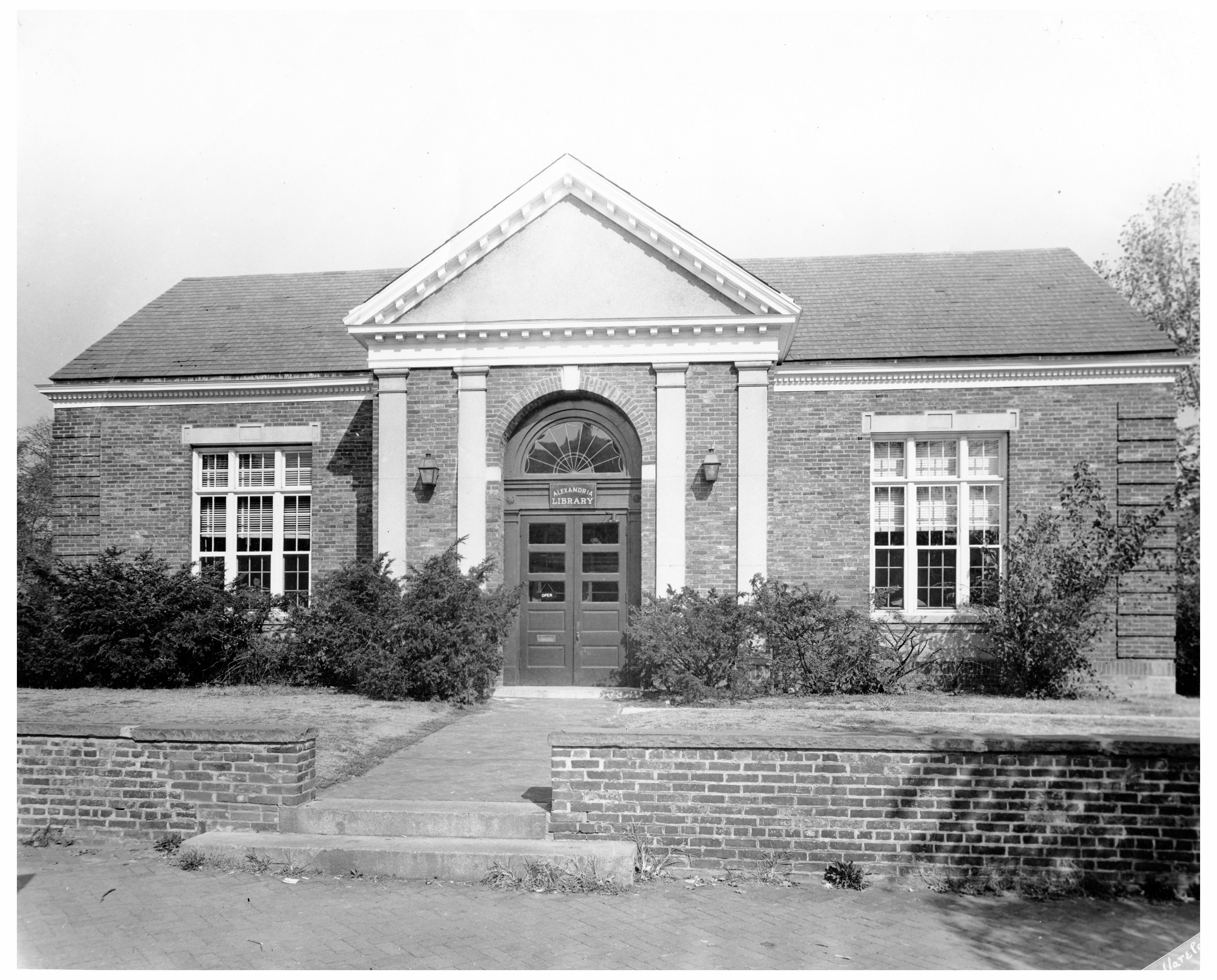
Besides the Mission, Kate also worked as a representative of the U. S. Government to various European peace conferences and investigative committees. She was a charter member of the League of Women Voters, as well as being president of the National Council of Women from 1911-1916. After a very brief illness, Kate died at her Alexandria home in 1925 at the age of 70.
Kate was the first woman to receive the honor of having the flag of the Virginia State Capitol in Richmond lowered to half-mast in acknowledgement of her death. Several of her children continued her philanthropic works for many years, some until their own deaths decades later.
Portait of Kate Waller Barrett: Library of Congress, Bain News Service Photograph Collection (LC-B2-3729-3 [P&P] (url https://www.loc.gov/item/2014700796/ )
Image of Kate Waller Barrett Library: Alexandria Library, Vertical File Collection (MS394, #819)
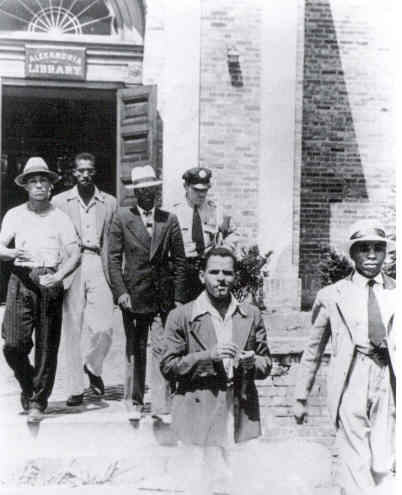 One of America's first sit-ins took place at Alexandria Library on August 21, 1939.
One of America's first sit-ins took place at Alexandria Library on August 21, 1939.
The present-day Barrett Branch Library on Queen Street (originally called Alexandria Library) was the only library building in a city with a population of 33,000. It was built in 1937 with money donated by the family of Kate Waller Barrett (1857-1925). However, as with many public services in the country financed by the community's taxpayers, the library was only available to whites. African Americans, though they voted and paid taxes, were not allowed to use the library.
Samuel Wilbert Tucker (1913-1990), who grew up only two blocks from the Barrett Branch, was an ambitious young lawyer who had recently graduated from Howard University Law School. Tucker tried for several years to establish equal access to community resources, but the white community, including the Alexandria Library Board, remained unswayed.
In the summer of 1939, Tucker, just 26, developed a strategy by preparing a select group of African American men for a deliberate act of civil disobedience.
The events that unfolded during that summer and Mr. Tucker's work for civil rights changed the Alexandria Library, the City of Alexandria, and had ripple effects throughout the country.
To read the full story of the 1939 Alexandria Library Sit-In, visit alexlibraryva.org/1939-sit-in.
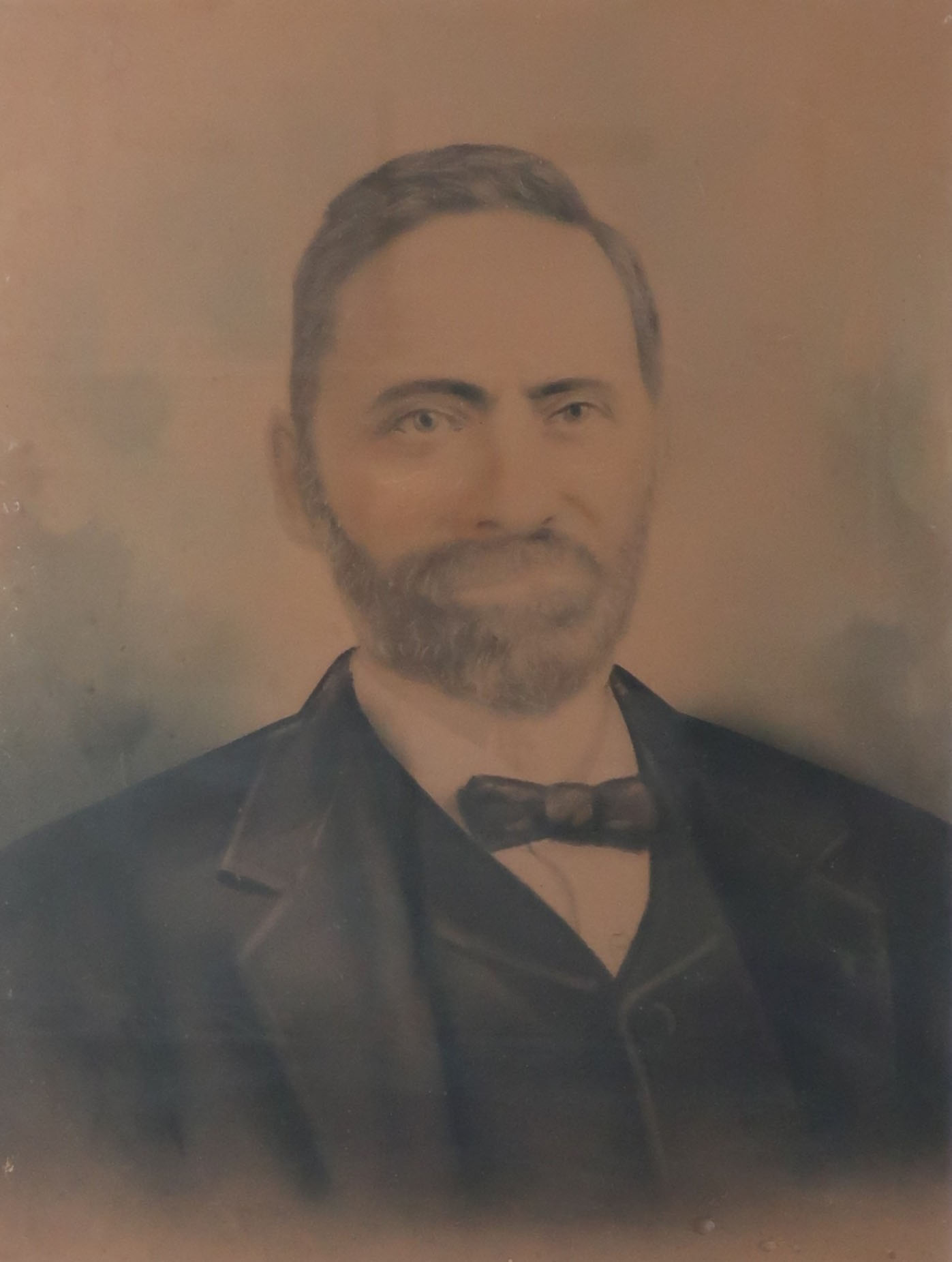
The Robert Robinson Library was opened on April 22, 1940. Due to his importance to the Black Community in Alexandria, the “separate but equal” Black library built in response to the 1939 Alexandria Library Sit-In was named in Robinson's honor.
The Robinson Library is now the Alexandria Black History Museum.
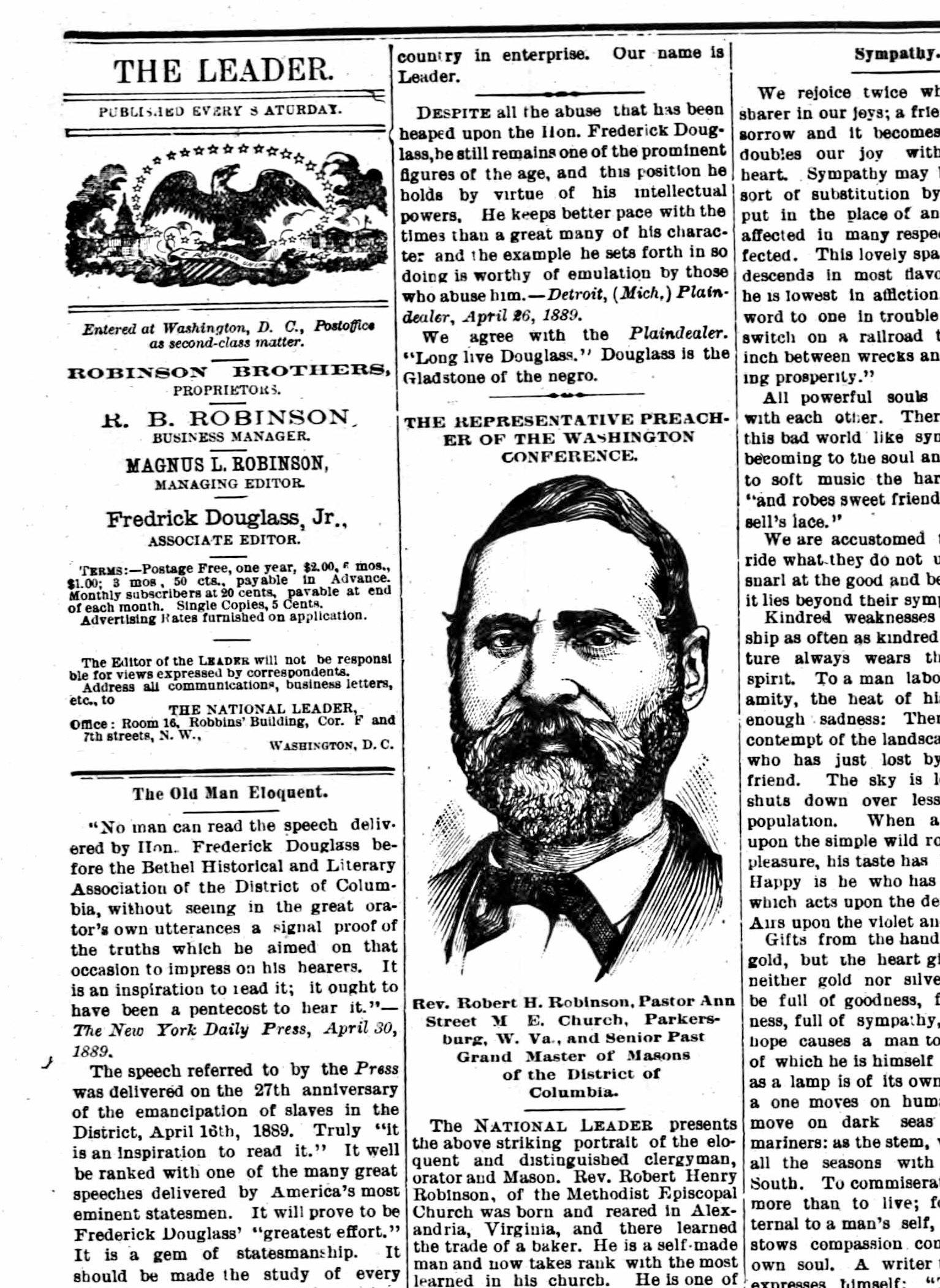
Robert H. Robinson was born on March 14, 1824, in Alexandria, Virginia to the daughter of Caroline Branham, the enslaved maid of Martha Washington, wife of President George Washington. He eventually gained his freedom through the efforts of his grandmother.
While originally trained as a baker, Robert spent the majority of his life as a minister in the United Methodist Church. He preached in four states and in Washington, D. C. Robert was a very active member, teacher, and preacher at Roberts Chapel in Alexandria, now called the Roberts Memorial United Methodist Church.
Robert was a founding organizer of the Washington Methodist Episcopal Conference in 1864. The conference was the first separate Black conference of the Methodist Episcopal Church. Robert was also one of the first Black delegates to the General Conference of the Methodist Episcopal Church in 1872.
Robert married a woman named Mary Ann in 1847, their 50th anniversary earning its own article in the Washington Bee newspaper (Chronicling America website, The Washington Bee, 14 August 1897). The couple had six children together.
Robert passed away in 1909 at the age of 85. After his passing a chapel was built, and named in his honor, on the grounds of the William McKinley Industrial School in Alexandria, where Robert had been on the governing board as treasurer of the school.
Images provided courtesy of the Alexandria Black History Museum
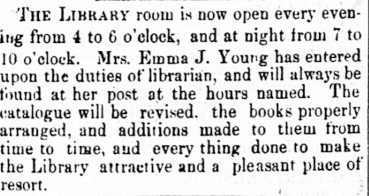 Emma J. Otterback was born in Washington D. C. in December of 1846. She was the youngest of seven children born to Phillip Otterback Sr. and Sarah Burford Otterback. Emma married a carriage maker named Thomas E. Young, May 18, 1864. The couple had four children, three of which lived into adulthood. While her three living children were very young, Emma accepted the post as librarian of the Alexandria Library Company, making her the very first female librarian in Alexandria. She resigned her post after only a year and a half to become a first grade teacher in Arlington, before returning to Alexandria to teach at the Washington School. She died in March of 1903. Her husband died only a few months later.
Emma J. Otterback was born in Washington D. C. in December of 1846. She was the youngest of seven children born to Phillip Otterback Sr. and Sarah Burford Otterback. Emma married a carriage maker named Thomas E. Young, May 18, 1864. The couple had four children, three of which lived into adulthood. While her three living children were very young, Emma accepted the post as librarian of the Alexandria Library Company, making her the very first female librarian in Alexandria. She resigned her post after only a year and a half to become a first grade teacher in Arlington, before returning to Alexandria to teach at the Washington School. She died in March of 1903. Her husband died only a few months later.